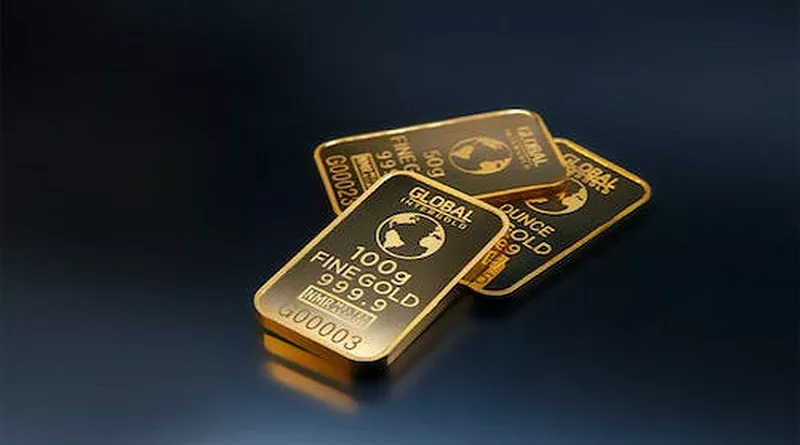In the intricate dance of global economics, the relationship between the U.S. dollar and precious metals, particularly gold, holds a pivotal role. Investors and economists closely monitor the dynamics between these two entities, especially pondering the potential consequences if the U.S. dollar experiences a significant decline. In this exploration, we delve into the intricacies of what happens to gold if the dollar crashes, unraveling the historical patterns, economic principles, and investment considerations that shape this complex relationship.
1. Introduction: The Dollar-Gold Nexus
Significance of the U.S. Dollar:
The U.S. dollar serves as the world’s primary reserve currency, influencing global trade, investments, and economic stability.
Gold, a precious metal with intrinsic value, has historically been viewed as a safe-haven asset and a hedge against economic uncertainties.
2. Historical Patterns: Dollar Crashes and Gold Prices
Inverse Relationship:
Historically, there has been an inverse relationship between the U.S. dollar and gold prices. When the dollar weakens, gold prices often experience an uptrend, and vice versa.
1970s Example: The period following the collapse of the Bretton Woods system in the 1970s witnessed a notable surge in gold prices amid a declining U.S. dollar.
3. Economic Principles: Understanding the Dynamics
Safe-Haven Status of Gold:
Gold is often considered a safe-haven asset, sought by investors during times of economic uncertainty, currency devaluation, or geopolitical turmoil.
Investors turn to gold as a store of value, given its scarcity, durability, and lack of correlation with traditional financial assets.
Impact of Dollar Devaluation:
A weaker U.S. dollar can result from factors such as inflation, economic downturns, or excessive money supply. In such scenarios, gold may be perceived as a more stable store of value compared to a depreciating currency.
4. Investment Considerations: Dollar, Gold, and Diversification
Diversification Strategy:
Investors often employ a diversification strategy to mitigate risks in their portfolios. Allocating a portion to gold can act as a hedge against potential losses in other assets, especially if the dollar is facing headwinds.
Portfolio Insurance: Gold’s historical role as a form of portfolio insurance becomes particularly relevant during periods of currency volatility.
Role of Central Banks:
Central banks play a key role in holding reserves in both U.S. dollars and gold. Changes in their asset allocations can impact gold prices, reflecting shifts in confidence in the U.S. dollar.
5. Macro-Economic Factors: Dollar, Gold, and Global Influences
Global Economic Conditions:
Global economic conditions influence the dollar-gold relationship. Economic downturns or financial crises can prompt investors to seek the stability offered by gold.
Interest Rates: The relationship between interest rates and gold prices is complex. While rising interest rates may strengthen the dollar, they can also be indicative of inflationary pressures, potentially benefiting gold.
Geopolitical Events:
Geopolitical tensions, trade disputes, or global uncertainties can trigger flight-to-safety behavior, prompting investors to flock to gold.
Currency Wars: Competitive devaluations and currency wars among nations can impact the relative strength of the U.S. dollar and elevate gold’s appeal.
6. Market Dynamics: Speculation, Sentiment, and Gold Prices
Speculative Movements:
Speculative trading and market sentiment play a significant role in short-term fluctuations in gold prices.
Traders may react swiftly to perceived shifts in the strength of the U.S. dollar, amplifying trends in the gold market.
Psychological Factors:
Psychological factors contribute to the allure of gold during times of uncertainty. The perception of gold as a safe haven is deeply ingrained in investor psychology.
Media coverage, geopolitical events, and economic indicators can fuel sentiment shifts that impact the dollar-gold relationship.
7. Potential Scenarios: Dollar Crashes and Gold Responses
Scenario 1: Dollar Crisis and Flight to Gold:
In the event of a severe dollar crisis, where confidence in the currency erodes significantly, investors may rush to gold as a perceived safer alternative.
This scenario could lead to a sharp increase in gold prices, driven by both retail and institutional demand.
Scenario 2: Systemic Economic Challenges:
If a dollar decline is accompanied by broader systemic economic challenges, including inflationary pressures and economic instability, gold’s appeal as a hedge may intensify.
Investors seeking to preserve wealth may allocate a larger portion of their portfolios to gold, contributing to sustained upward pressure on prices.
8. Risks and Considerations: Potential Pitfalls in the Relationship
Complex Dynamics:
While the historical relationship between the U.S. dollar and gold suggests an inverse correlation, market dynamics can evolve, and past patterns may not always predict future outcomes.
Unexpected economic events, policy shifts, or unanticipated global developments can introduce complexities that influence the dollar-gold relationship.
Volatility and Liquidity:
Both the gold market and currency markets can exhibit high levels of volatility, and liquidity considerations should be taken into account by investors navigating these markets.
Market participants should be prepared for the potential for rapid price movements and plan risk management strategies accordingly.
Conclusion: Navigating Financial Seas in Uncertain Times
In conclusion, the relationship between a potential dollar crash and gold prices is intricate and multifaceted. While historical patterns and economic principles suggest an inverse correlation, navigating the financial seas requires a nuanced understanding of global economic conditions, market dynamics, and investor behavior.
Investors should approach the dollar-gold relationship with a strategic mindset, considering their risk tolerance, investment objectives, and the broader economic landscape. Gold’s role as a safe-haven asset and a hedge against currency risks positions it as a valuable component in a diversified portfolio, especially during periods of economic uncertainty.
As the global financial landscape continues to evolve, staying informed about economic indicators, geopolitical developments, and market sentiment will be crucial for making well-informed investment decisions. Whether the dollar remains a stalwart currency or faces challenges, gold’s timeless allure as a store of value and a hedge against uncertainty will likely persist, making it a cornerstone in the portfolios of prudent investors navigating uncertain financial seas.

